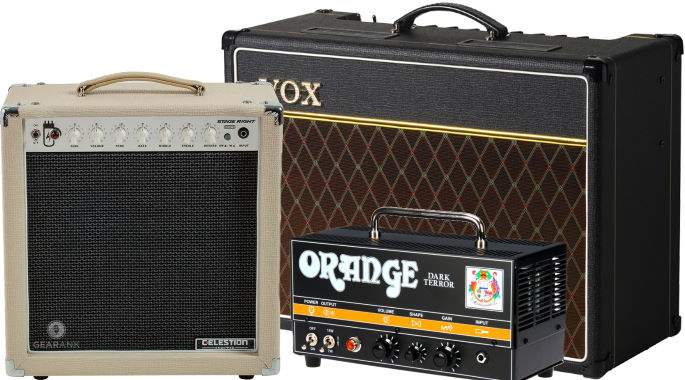
See which tube amps (amp heads and combo amps) are rated highly, and get tips on how to find the best tube amp that fits your playing style.
Disclosure
We recommend all products independently of 3rd parties including advertisers. We earn advertising fees from:
• • • • •

• • • • •
Amazon
As an Amazon Associate we earn from qualifying purchases.
• • • • •
More Guitar Amps
I’m of the opinion that you sound like yourself regardless of the guitar amp you use. But there are amps that can bring out better versions of yourself.
Tube amps make you sound better while keeping your core sound intact. They don’t mask or transform your sound to a particular model. Rather they add harmonic content that sounds musical. This is the reason why tube amps are often preferred for being “natural” sounding.
While modeling tech is more convenient and is getting better at sounding organic – they still can’t beat a real tube amp when it comes to tube tone and vibe. And this is why vacuum tube amps continue to be popular across price ranges.
To help you find a fitting tube amp, we analyzed ratings for the top rated tube amps at different price points under $1000. And this edition expands our scope to present you with the best rated amps among the two main Types of Amps: tube amp heads and combo tube amps.
The Best Tube Amps 2024
| Gearank* | SRC* | Check Price | ||||||
|---|---|---|---|---|---|---|---|---|
| Tube Amp Head Under $500 | ||||||||
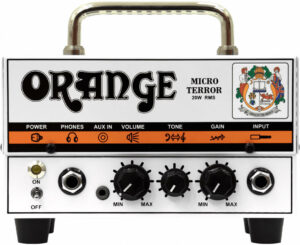 | Orange Micro Terror MT20 | 93 | 1600+ | |||||
| Combo Tube Amp Under $500 | ||||||||
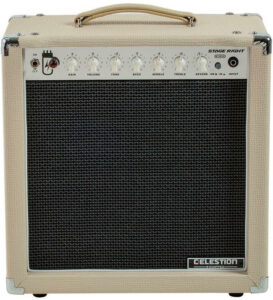 | Monoprice Stage Right 611815 | 93 | 1750+ | |||||
| Tube Amp Head Under $1000 | ||||||||
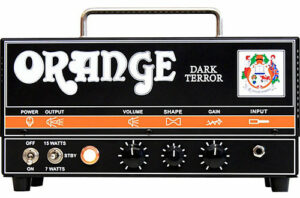 | Orange Dark Terror DA15H | 94 | 325+ | |||||
| Combo Tube Amps Under $1000 | ||||||||
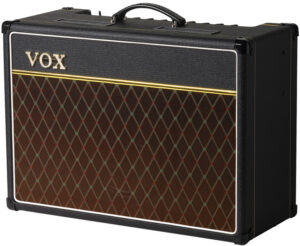 | Vox AC15C1 | 95 | 1350+ | |||||
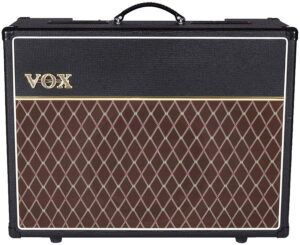 | Vox AC30S1 | 96 | 125+ | |||||
Author & Contributors
Raphael Pulgar
I've been an audio engineer for 20 years specializing in rock and metal recordings. I also play guitar and produce original music for my band and other content creators.
The Best Tube Amp Head Under $500
Orange Micro Terror MT20
Cons
- Limited functionality
- No reverb
- Not for those who want great sounding cleans
Pros
- Great sounding tube overdrive tone
- Lively and responsive
- Can go loud and still sound good
The Micro Terror is an amp designed to reproduce genuine Orange dirt tones while maintaining a diminutive "Micro" profile.
It features a hybrid design, combining a single 12AX7 preamp tube with a solid state power amp, which is not that uncommon. But Orange did a good job at getting the tone just right.
It has good saturation and responsiveness that you don't normally expect from hybrid amps, let alone something as ridiculously small as this one.
And since it uses an actual preamp tube, the tone is organic and lively, even more so when you crank the gain.
On the flip side, the cleans are neutral and quite stale, so if you're looking for sparkling clean tone, this is not for you.
Given its size, there's not much room for putting complex controls, so Orange opted for a simple 3-knob configuration that includes control for volume, tone and gain.
The controls are intuitive and get the job done, but they are a bit limiting. There is no way to fine-tune the EQ, and there are no effects like reverb.
Still, this amp is not meant for extensive tweaking. Rather it is meant to produce great tone as quickly and as conveniently as possible.
Another praiseworthy trait of the Micro Terror MT20 is its distinct-looking metal lunchbox design. It doesn't look cheap, it feels solid, and it's hard to mistake for something else.
The Orange Micro Terror MT20 is a great portable low to mid-gain amp, especially if you are into old-school Orange voicings.
Specifications
- Power Rating: 20-Watts
- Speaker Out: 1/4"
- Tubes: 12AX7 (Preamp)
- Channels: 1
- Controls: Volume, Tone, Gain
- Effects: None
- Amp Models: None
- Inputs/Outputs: 1 x 1/4", 1 x 1/8" (Aux)
- Dimensions: 5.3" x 6.49" x 3.6"
- Weight: 1.87 lbs
| Website | Source | *Rating Value |
| Premier Guitar | Jordan Wagner | 90/100 |
| Equipboard | the_patchman | 100/100 |
Demo
The Best Tube Amp Under $500 - Combo Amp
Monoprice Stage Right 611815 - 15W 1x12"
Cons
- Can get muddy when driven too hard
- Not for those who prefer tight response
Pros
- Hard to beat when it comes to value
- Vintage clean and dirty voicings
- Good volume for a 15W amp
- Works well with pedals
Monoprice is a brand known for affordable tube amps, and the Stage Right 611815 is their 15-Watt all-tube combo amp with specs that normally command much higher pricing.
This tube combo amp comes in a 1 x 12" combo package, with three ECC83 preamp tubes and two EL84s in the power section. This is a popular tube combination found in vintage amps and their modern recreations.
More importantly, you get them without the premium price tag. Speaking of price, don't expect this amp to ship with premium-quality tubes, but they do get the job done. For best results, you can swap out the tubes for ones from a reliable brand.
While most low-watt tube amps have very streamlined controls, Monoprice provided a bit more than what you'd expect.
The amp section has controls for gain, volume, and tone, as well as 3-band EQ knobs. These controls allow for good versatility in terms of tone shaping and how the amp is driven. It also comes with built-in spring reverb.
Adding to the already impressive value of this amp is its use of a 12" speaker from a popular brand - a Celestion Seventy 80. Given its size, it is quite capable of being driven hard.
This speaker is known for its bright tonality, but since it's 12", it is capable of reproducing the lows well.
The volume is a bit limited, but it should be enough for home use or even small venue jamming. Note that driving the amp too hard can cause it to sound muddy.
At lower gain levels, the amp provides a good enough clean tone but with a bit of grit. Raising the gain knob lets the amp go from clean to mid-gain dirty tone.
The voicing for both clean and dirty tones are similar to vintage amps, open and not overly compressed. This makes it ideal for classic blues, rock n roll, and similar styles.
On the flip side, those who want modern tight response will not find this amp appealing.
Sound is very transparent, which can be an issue for those who want specific amp tones, but its generic voicing makes it a great platform for effects pedals.
Other features include having a cream-colored synthetic leather exterior and cloth speaker grill.
The value of this budget 1x12" guitar tube amplifier is hard to beat, even among other Stage Right amps. It is definitely one of the best tube amp deals to get for those working with a limited budget.
Specifications
- Power Rating: 15W
- Preamp Tube: 3 x ECC83 (12AX7)
- Poweramp Tube: 2 x EL84
- Speaker: 1 x "12 (Celestion Seventy 80)
- Input: 1/4"
- Output: 1 x 1/4" Speaker Out, Effects Loop
- Cabinet: Rear Ported
- Control Knobs: Gain, Volume, Tone, Bass, Middle, Treble, Reverb
- Weight: 31.62 lbs
| Website | Source | *Rating Value |
| Festival Peak | Christian A. Pfeiffer | 88/100 |
| YouTube | 60 Cycle Hum | 97/100 |
The Best Tube Amp Head Under $1000
Orange Dark Terror DA15H
Cons
- Single channel only
- Shape control limits tonalities
Pros
- Great heavy tones on stage and in the studio
- Good clean tone
- 15W loud enough to keep up with drummers
- Very portable
A lot of modern musicians in the Metal genre prefer to use either modelers (in the case of modern prog) or ratty vintage tube amps (for stoner/doom guys). The Orange Dark Terror is meant to cater to the latter.
This compact 15W All-Tube amplifier is designed for heavier, saturated tones, with a few more gain stages in the preamp section.
The preamp has four stages of gain, like many modern high-gain guitar tube amps, paired with a cleaner power amp section. This results in a more saturated type of gain compared to the vintage-style voicings of the other Orange Terror amp series.
The extra gain stages on the preamp also allow the power section to be kept clean enough, allowing for better utilization of its buffered effects loop.
True to the Terror line, The Dark Terror features a very minimal control setup. The shape knob takes the place of the typical 3 band eq. The Shape knob is a combination of a treble and bass control with a surprisingly wide range from really dark, Sleep-esque tones to scooped, old-school metal and everything in between.
The Volume and Gain control interact with each other to achieve specific tones.
What really surprised me is how good the clean tones are. They aren't as pristine as Fender amp cleans, but they do have a lot of vibe. It doesn't feel stiff like many high-gain amps' clean channels.
In conjunction with the effects loop, the Dark Terror is able to be used with reverb and delay pedals for atmospheric cleans.
All that being said, the Dark Terror is still just a single-channel amplifier. That means to get to the clean tones, you either have to roll down the volume on your guitar or settle with one gain setting all throughout.
While intuitive, the Shape control can be limiting in terms of very specific tonal settings. I would have loved to have even a 2 band EQ in place of the shape knob.
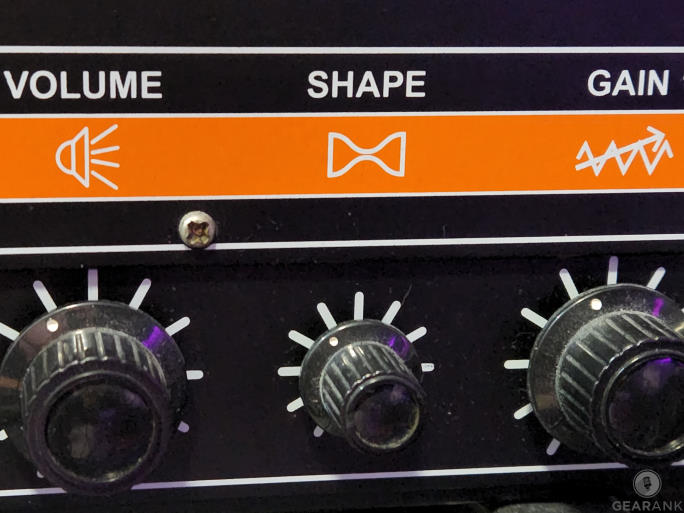
True to the Terror line, the Dark Terror features a very minimal control setup. The shape knob takes the place of the typical 3 band EQ.
The Dark Terror is aggressive but can also be pristine at recording volumes. But for those that rely on a clean tone, the headroom of the 15W amplifier might be a bit limited at lower gain settings.
This head was made to rock out, so if you're looking for a clean pedal platform, look elsewhere. But for live use, it's all out or get drowned. It can easily keep up with heavy-hitting drums on higher gain settings, especially when pushing the power amp tubes.
The best application, and where I personally use my Dark Terror is in the studio. The 7W mode is great in the studio for getting more power amp saturation without overloading more sensitive mics like condensers. For doomy, sludgy tracks, the Dark Terror is what I plug into the most.
Where it really shines is getting that saturated chug in the studio at volumes that won't shake the walls. It's this controlled chaos that makes the Dark Terror a must-have in your amp arsenal. This ability to provide good chug allows it to stand toe to toe with more expensive modern tube amps.
Specifications
- Power Rating: 7 to 15-Watts
- Preamp Tube(s): 3 x 12AX7
- Poweramp Tube(s): 2 x XEL84
- Controls: Gain, Shape, Volume
- Input(s): Normal
- Output(s): 8ohm, 16ohm, 2x16ohm
- Misc:Tube Buffered Effects Loop
- Weight: 12.46 lbs
- Suitable for: Modern Rock, Alternative, Punk, Metal
| Website | Source | *Rating Value |
| Premier Guitar | Jordan Wagner | 90/100 | Gearank | Raphael Pulgar | 96/100 |
| YouTube | Plague Scythe Studios | 89/100 |
The Best Tube Guitar Amps Under $1000 - Combo Amps
Vox AC15C1 - 15W 1x12"
Cons
- Not for purists who prefer Jensen speakers
- Not loud enough for use on stage or in big venues
Pros
- Harmonically rich Vox chime
- Tighter bottom end courtesy of Greenback speaker
- Good sounding reverb and tremolo
- Pedal friendly
The Vox AC15 is arguably the most important amp in the rise of the Britpop sound of the '60s. And despite being 15 watts, the humble AC15 was loud enough to keep up with a drummer and was a staple in many bands of the time.
Today the AC15C1 continues this legacy with a modern twist, courtesy of the use of Celestion Greenback speaker - which is commonly associated with Marshall guitar amplifiers. This speaker gives the amp tighter low-end response compared to old AC15s. And with proper Guitar Micing, this amp gives you the classic sound that you'd expect from Vox.
This tighter response makes the amp better suited for today's indie and alternative rock styles. It also makes the amp pedal friendly, especially for overdrives.
This shift to a Greenback speaker won't make this the best tube amp under 1000 for purists who prefer original's Jensen speakers. But it helps expand the tones and use of the amp, which will appeal to today's guitar players who play multiple styles.
It is quite loud for a 15W amp but not enough to take the place of bigger stage amps.
Everything else is designed to reproduce the classic Vox chime, with chimey cleans and fat grit when pushed. Including its vintage style appearance and amp section, which is equipped with three 12AX7 preamp tubes and two x EL84 for the power tubes.
It even comes with the iconic Top Boost channel and its dedicated control knobs. The built-in reverb and tremolo are also quite good and deserving of special mention.
Thanks to its modern voicing, you don't have to be a fan of the Beatles to appreciate the AC15C1's harmonically rich tone. Definitely check it out if you are a fan of the Vox chime tone but want extra sonic legroom.
Specifications
- Power Rating:15w
- Preamp Tube: 3 x12AX7
- Poweramp Tube: 2 x EL84
- Speaker: 1 x 12” Celestion G12M Greenback
- Input:2 x 1/4" (Normal, Top Boost)
- Output: 1 x 1/4" (16 ohms), 2 x 1/4" (single 8 ohm, 2 x 16 ohm), 1 x XLR (DI out), USB
- Cabinet: Open Back
- Control Knobs: Master Volume, Master Tone, Tremolo Depth, Tremolo Speed, Reverb Level, Top Boost Bass, Top Boost Treble, Top Boost Volume, Normal Volume
- Weight: 48.5 lbs
| Website | Source | *Rating Value |
| YouTube | Jack Fossett | 96/100 |
| The Gear Page | guitkrazy | 98/100 |
Vox AC30S1 - 30W 1x12"
Cons
- Not for AC30 purists
- Limited features and volume
Pros
- Lighter version of the iconic AC30
- Higher headroom than the AC15
- Genuine Vox chime and dirt tone
- Streamlined controls
The AC30S1 hails from the prestigious Vox AC30 amp but with a streamlined feature set to make it easier to use and carry around.
It is as straightforward as it gets with its single-channel format that puts the spotlight on the classic AC30 Top Boost tone and nothing else.
Controls are also kept to a minimum, so you can get from the familiar Chimey clean sound of old Vox amps up to smooth overdrive without the need for too much control fiddling.
As expected, low gain clean tone is incredibly responsive and bright, but be warned that it can be too trebly for some applications.
At its core are dual 12AX7 preamp tubes and quad EL84 power tubes that give life to the touch-sensitive tone expected from a classic Vox tube amp.
Raising the gain gradually adds harmonically rich overdrive while retaining the amp's bright flavor. Don't expect this amp to extend into high-gain territory, but what it can do, it does best - which is to provide quality dirty tone.
Instead of the traditional 2x12" configuration, the AC30S1 has a single 12" Celestion VX12 speaker, which is specially designed to reproduce the sound of the AC30 with just one speaker.
This means that you get the same flavor and higher headroom as the AC30 while keeping the size and weight lighter, closer to the AC15. But compared to an AC15, the AC30S1 also has a bit more low-end, which helps balance out the brightness.
On the flip side, this 1x12" configuration is not as loud as the original.
Another important difference is the lack of tremolo effect, but it does have built-in reverb. The AC30S1 also comes with an effects loop, which makes sense since this amp is designed for those who get their tone-shaping from pedals.
If you're looking for a classic Brit-sounding plug-and-play tube amplifier for guitar that works well with pedals, then this should be at the top of your list.
Given all these changes, fans of the original AC30 2x12 configuration may want to look elsewhere, but I still say that they should give the lighter AC30S1 a try.
Specifications
- Power Rating: 30W
- Preamp Tube: 2 x 12AX7
- Poweramp Tube: 4 x EL34
- Speaker: 1 x 12" Celestion VX12
- Input: 1/4"
- Output: 1/4" External
- Cabinet: Rear Ported
- Control Knobs: Volume, Reverb, Treble, Bass, Gain
- Weight: 54 lbs
| Website | Source | *Rating Value |
| YouTube | Jack Fossett | 92/100 |
| MusicRadar | Nick Guppy | 80/100 |
Things to Consider when Buying a Combo Tube Amp
- What is a Tube Amp? The quick answer is that it is an amp that utilizes vacuum tubes for both the preamp and power amp sections. And this use of tubes differentiates it from the more common solid state amp. When comparing Tube Amp vs Solid State, electric guitars sound more well-rounded and natural.
This is especially obvious when driven hard because tubes clip sound in a way that is pleasing to the ears. This results in preamp and power amp distortion that sound really good. And this sound quality is what endears tube amps to guitarists even to this day when vacuum tubes are considered old technology.
- Sound quality is the main factor to consider when it comes to buying tube amplifiers. While opinions may differ on which particular amp model sounds better, most will agree that clarity, articulation, and dynamics are important.
Because of its subjective nature, individual reviews on tone are not conclusive, but when combined with other reviews, they provide us with a reliable representation of how good an amp sounds.
Tube amps are beloved for use with a Reamp box, improving the tone of an already recorded guitar track.
- Different amps have different voicings, and the differences range from subtle to obvious. Some experts (including manufacturers) divide tube amp voicings into flavors, usually labeled American tone (emphasizes the highs and lows) and British tone (emphasizes the mids and punch). While this may seem like a generalization, it does make the job of describing tonal differences easier.
If you're not familiar with amp tones, the best course of action is to look at the amp used by your favorite guitarists and go for something similar sounding. Thankfully, some manufacturers (like Marshall Amps, Blackstar Amplification, and Fender Amps) produce tube amps with multiple voicings. They are ideal if you want sonic flexibility. Because of voicing variations, the best tube amps for guitar can be vastly different depending on the musical genre you play.
- The two main amp types are Combo amps and Amp Heads. Combo amps combine the amplifier section with a speaker system, while amp heads have the amplifier component only, so they need to be paired with an external speaker to work.
Since everything you need is packed inside combo amps, they are the more convenient option. The downside to them is they are heavy and takes up more space. On the other hand, amp heads are lighter and give you more freedom to use different speakers and cabinets. The freedom to choose is limited by the capability and compatibility of the amp itself. Also, while the amp head is light by itself, you still have to factor in the weight and space taken by the speaker cab that you will be pairing it with.
- Since combo amps come with speakers, the amp section is housed in the same cabinet as the speaker. Closed Back cabinets project the sound forward. They produce a punchier and clearer tone. They are often preferred by live sound engineers because of the front projection, which is easier to mic. Open Back cabinets project sound to the front and back, resulting in a more natural ambient sound. These are preferred by guitarists because they fill rooms and stages better. Back Ported cabinets let some of the sound leak through small ports at the back, and are usually designed for low-end emphasis.
Cabinets are where some cheap tube amp manufacturers cut corners, which can result in Amp Buzz, and other unwanted noise. Keep this in mind when you're considering affordable tube amps.
- The general idea is that the bigger the speaker size, the better it can reproduce lower frequencies. But bigger is not always better, especially if you're not planning on using the amp on stage. 12" speakers are the most commonly used, because they provide good balance of highs and lows.
- Power rating dictates the loudness of an amplifier, along with its sonic headroom. The idea is that low power amps are ideal for practice, while playing big venues requires more power. Some tubes amps are equipped with power attenuators that allow you to lower the power rating in case you want to tame the amp's volume.
Also, lowering the power output also lets you crank the gain at quieter volume levels, which many use to get good tones without disturbing the neighbors. Note that tube amps tend to be louder than solid state amps of the same power rating specification.
- Having the ability to shape the sound of your guitar via EQ controls is important, but it doesn't always have to be the amp that does this job. There are now many pedals and rack effects that can accomplish the same Equalization with more accuracy.
- While most tube amps in this price range have a single input, some have two inputs to accommodate different types of guitars, or for routing your signal to different channels. These multi-input amps provide added flexibility, and at times allow for two guitars to use the same amp, albeit with some limitations.
Multiple output options are usually reserved for amp heads, but there are some combo amps with headphones and extension speaker outs. Those looking for quiet practice will want a headphone output. Interestingly, some offer direct USB recording functionality, which makes tube amp recording even more convenient.
- Extra features like spring or digital reverb, tremolo, and even built-in multi-effects are welcome bonuses for practice amplifiers because they allow for straight to amp convenience. These extras won't get much use in stage settings when you use pedals to achieve the same effect. Other amps have extra features that relate to build quality, like being hand wired instead of using modern PCB boards.
What is a Tube Amp?
Sound Quality
Amp Tone or Voicing
Combo Amps vs. Amp Heads
Cabinet
Speaker
Power Rating and Attenuation
Equalizer
Input/Output Options
Extra Features
Best Combo Tube Amp Selection Methodology
The first edition was published in 2017.
We began by scouring the tube amp market for highly rated combo and head tube amps for electric guitar. We chose those that are readily available at major retailers in the USA and ended up putting 63 of them on our short-list for closer rating analysis. We then examined relevant reviews, ratings and forum discussions about each amp on our short-list - this came to a total of more than 22,900 sources (an increase of more than 56% over the previous edition partly due to expanding the scope from just combos to include heads). We processed that data with the Gearank Algorithm to produce the rating scores out of 100 which we used to select the highest rated amps to recommend above. For more information about our methods see How Gearank Works.
About the Author and Contributors
Here are the key people and sources involved in this guide's production - click on linked names for information about their music industry backgrounds.
Lead Author & Researcher
Raphael Pulgar
I've been an audio engineer for 20 years specializing in rock and metal recordings. I also play guitar and produce original music for my band and other content creators.
These days I mainly play through my two Orange amp heads, however I've had the pleasure of playing through an old AC15 so I have the reference to understand the modern Vox combo amps and it's no surprise they are dominating this price range.
Contributors
Alexander Briones: Supplemental writing.
Jason Horton: Editing and Illustrating.
Media
Main/Top Image: Created by Gearank.com using photographs of the Monoprice Stage Right, Vox AC15C1 and Orange Dark Terror.
All the videos have been embedded in accordance with YouTube's Terms of Service.
The individual product images were sourced from their respective manufacturers' websites, promotional materials or supporting documentation except for the Dark Terror Shape Knob which was photographed by the Author.

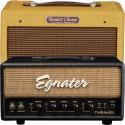
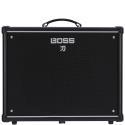
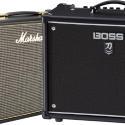
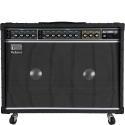
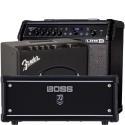
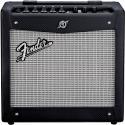
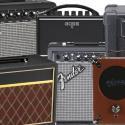
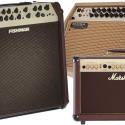
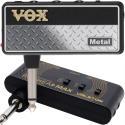
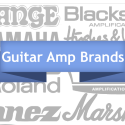 The Best Guitar Amp from the Top 10 Guitar Amp Brands
The Best Guitar Amp from the Top 10 Guitar Amp Brands
The following amps were out-ranked by the ones above so they were removed from this recommended list when we published our August 2022 Edition:
We’ve removed the following amp from the recommended list above due to it being discontinued: Supro Blues King 8.
We have removed the Vox AC10C1 due to a price increase that put it above the $500 limit for the section it qualified for. You can still see our analysis of it here.
The Vox AC15C1X has been removed from this guide to a price increase which put it above this guide’s price limit.
You can still see our analysis of it in our guide to Low Watt Tube Amps.
Pleased to tell you that monoprice amp now shipped with all JJ tubes and celestion seventy80 speaker
Hi Sam,
We have updated the specifications on the Monoprice. However since the tube brand is not directly specified by the manufacturer and retailers, (and most likely is subject to change without notice) we have chosen to omit the tube brand.
-Raphael
Publication of our July 2021 Edition resulted in the following discontinued amp coming off the recommend list above: Peavey Classic 50 212 II.
We’ve removed the Marshall Origin5C from the recommended list above due to being discontinued.
We’ve removed the following amp from the Under $500 section due to a price increase: Marshall Origin20C.
This section is for the high school kids, nothing wrong with that but if you’re a player on the prowl just skip these articles.
Our research strongly suggests that the average guitarist using these amps are not high school kids, so can you elaborate and tell us what you think we should change in this guide?
Our September 2020 update resulted in the following amps coming off the recommended list above, but you can still see our analysis of them:
As a result of our November 2019 update, which included a modified methodology that excluded amps rated 15-watts or less from the $500 to $1000 section, the following amps came off our recommended list but you can still read our analysis of them:
Today the following amps were removed from our recommended list above, due to having been discontinued, but you can still read our analysis:
As a result of the June 2018 update of this guide, the following amps have been removed from the recommended list above but you can still read our thoughts on them: